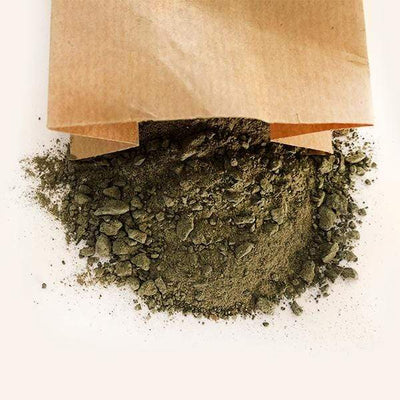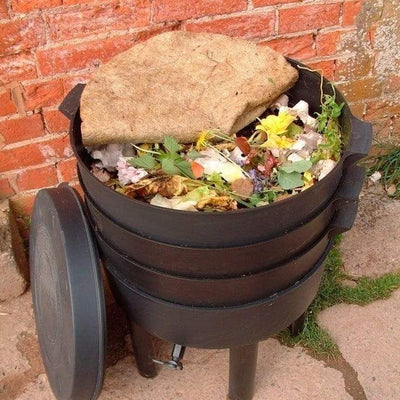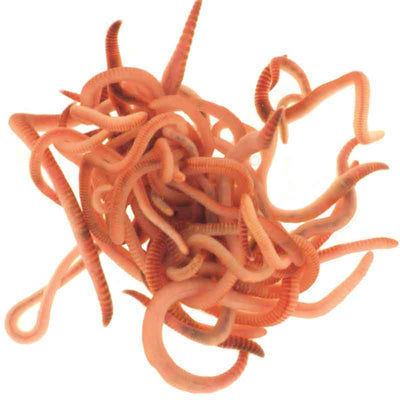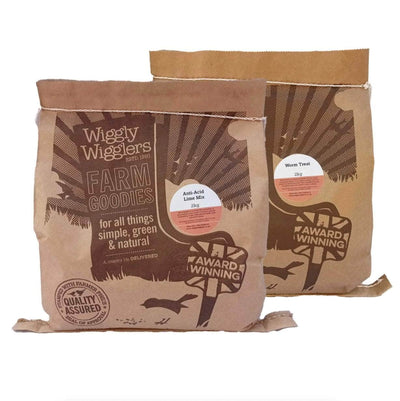Every autumn, the nation reaches for the rake. Lawns are stripped bare, borders are swept clean, and bags of leaves are lined up ready for the tip. And while making leaf mould is brilliant (it’s the gardener’s version of black gold), if you clear every leaf, you’re tidying away one of nature’s most important soil builders — worms.
🌿 Worms Need Leaves — and We Need Worms
Under our feet in the UK live around 31 different species of earthworm, each doing its own important job for soil health. Some, like Lumbricus terrestris (the big lobworm), live deep underground creating vertical burrows that keep soil open and aerated. Others — like our very own composting worms, Dendrobaena veneta — stay near the surface mixing leaves and organic matter into nutrient-rich compost.

But here’s the worry: studies show worm numbers have dropped by up to 50% in the last few decades. The culprits? Over-cultivation, compaction, chemicals, and, yes — over-tidy gardens. Worms need leaf litter as their natural mulch. Those fallen leaves are carbon-rich, packed with microbes, and essential for feeding the underground ecosystem. So, if you want healthy soil, leave the leaves — your worms (and your lawn) will thank you.
🌍 Worms Are the Hidden Carbon Bankers
Every time a worm drags a leaf into the soil, it’s not just feeding itself — it’s storing carbon. The carbon in those leaves becomes stable organic matter, safely locked into the soil. Worms are literally turning waste into climate resilience.
Healthy soils can hold up to 12% organic matter, which acts like a sponge for water, nutrients, and carbon. The more worms you have in your soil, the more life it can support. A lack of worms is one of the clearest warning signs of poor soil health.
So, if you see worm casts on the lawn, don’t groan! It’s a sure sign your soil’s alive and well.
🪱 What Worms Need to Thrive
If you want to help worms (and your garden), you don’t need a degree in soil science — just a few autumn garden tips and a bit of patience:
-
Food: Worms eat decaying matter — leaves, compost, grass clippings. Keep soil covered and avoid leaving it bare.
-
Moisture: They breathe through their skin, so they need damp conditions (not dry, not waterlogged).
-
Shelter: A thin layer of leaves or mulch protects worms from frost, drought, and hungry robins.
-
No Chemicals: Synthetic fertilisers, pesticides, and slug pellets disrupt soil biodiversity and harm worms directly.
-
Stability: Avoid constant digging or heavy machinery — deep-burrowing worms like peace and quiet.
🌱 The Wiggly Way to Help Even More
If you really want to boost your worm numbers, get yourself a worm farm. It’s the easiest way to recycle kitchen waste and supercharge your soil.

Our Urbalive Worm Farm looks smart enough for any greenhouse or patio, while our In-Ground Worm Farm is brilliant if you’d rather let the garden do the work. Add a handful of Wiggly Composting Worms (Dendrobaena veneta), feed them scraps and shredded leaves, and they’ll repay you with worm casts, liquid feed, and the healthiest compost imaginable.
It’s regenerative gardening at its wriggliest — and the results are fantastic.
🌾 So, This Autumn...
By all means, make leaf mould. But don’t rake it all away. Leave some leaves where they fall, feed your worms, and let your garden soil come alive. Because when you see worm casts, tunnels, and wrigglers at work, that’s not mess — that’s a standing ovation from the underground.
Wiggly Tip:
Tidy less, feed more, and if you fancy going full worm-whisperer, start your own wormery. It’s composting with character — and results. 🪱💪






